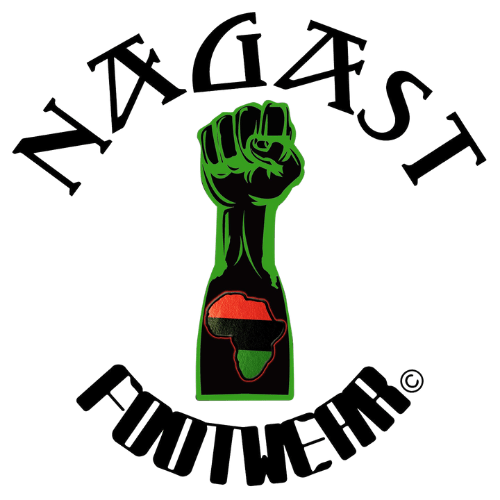
The Kebra Nagast: Unpacking the Book That Shaped African Heritage
Share
Ever heard of a book so powerful it literally built nations? The Kebra Nagast: "The Glory of the Kings": is exactly that kind of text. Written in Ge'ez, Ethiopia's ancient sacred language, this isn't just some dusty historical document sitting in a library. This is the book that gave African people a direct line to biblical royalty, challenged every racist narrative about African civilization, and continues to fuel movements of Black pride worldwide.
For over 700 years, the Kebra Nagast has been telling a story that puts Africa at the center of sacred history. Not on the margins. Not as an afterthought. Right in the middle of God's plan for humanity.
What Exactly Is This Book?
Think of the Kebra Nagast as Ethiopia's national epic: their foundational story that explains who they are and why they matter. But unlike most national stories, this one connects Ethiopian rulers directly to King Solomon, one of history's most legendary monarchs.
The text we have today was compiled between 1314 and 1321 by six scribes who brought together centuries of oral traditions, religious teachings, and cultural memories. Originally written in Coptic, then translated to Arabic in 1225, and finally rendered into Ge'ez, this book went through multiple hands before becoming the 117-chapter masterpiece that exists today.
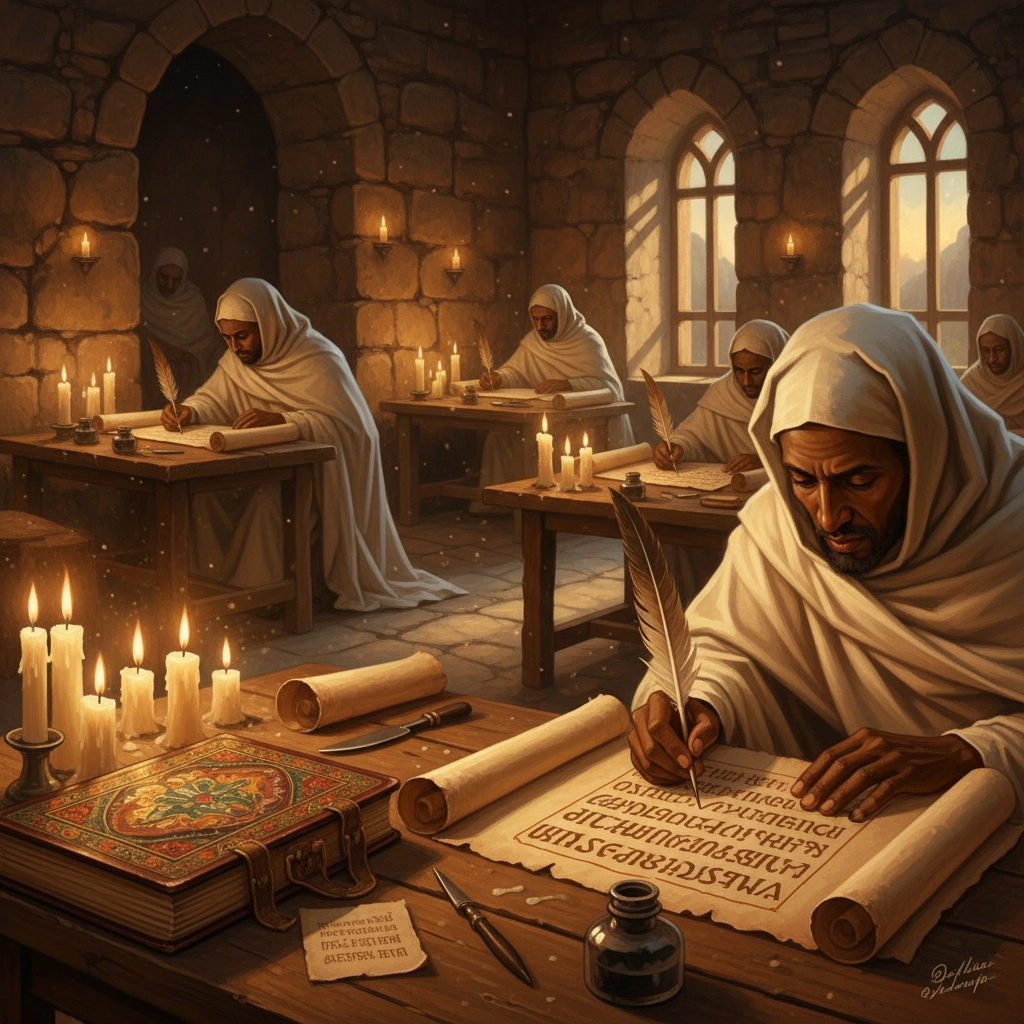
But here's what makes it revolutionary: the Kebra Nagast doesn't just borrow from biblical tradition: it claims Ethiopia as the ultimate inheritor of that tradition. It's a complete reframing of who gets to be chosen, who gets to be blessed, and who gets to hold the most sacred objects on earth.
The Story That Changed Everything
At its heart, the Kebra Nagast tells the legendary love story between Queen Makeda (the Queen of Sheba) and King Solomon of Jerusalem. But this isn't just romance: it's a tale of cultural exchange, wisdom-sharing, and the birth of a new royal lineage.
The story begins when a merchant named Tamrin travels to Solomon's court and returns to Ethiopia with tales of the king's incredible wisdom. Queen Makeda, intrigued and determined to test this wisdom herself, makes the journey to Jerusalem with a massive caravan loaded with gifts.
What happens next changes the course of spiritual history. Solomon and Makeda fall in love, and from their union comes a son: Menelik I, who becomes the founder of Ethiopia's Solomonic dynasty. But Menelik doesn't just inherit royal blood; according to the Kebra Nagast, he also brings back to Ethiopia the most sacred object in all of Judaism: the Ark of the Covenant.
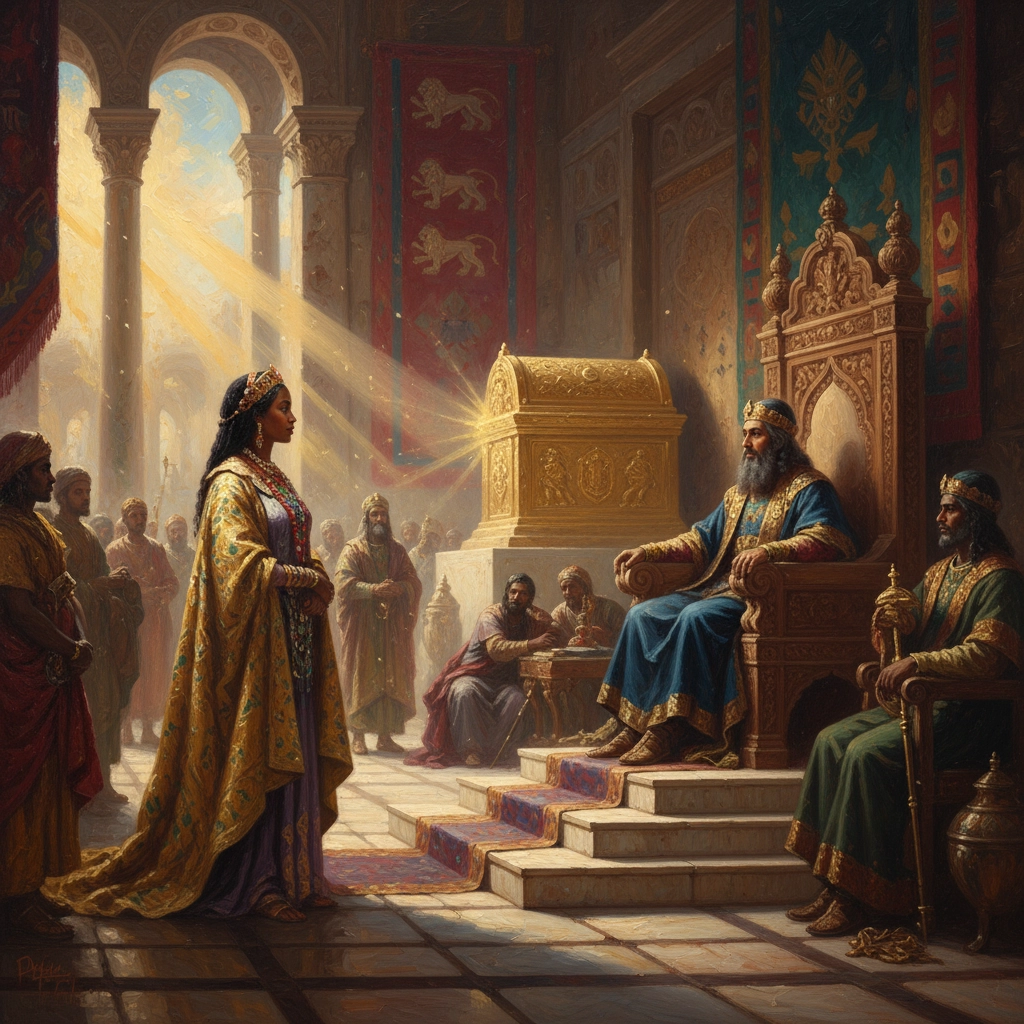
This isn't just any religious artifact. The Ark contained the stone tablets of the Ten Commandments: the direct word of God given to Moses. According to the text, when Menelik returns to Ethiopia, he brings with him God's presence itself, making Ethiopia the new chosen land.
Cultural Revolution in 117 Chapters
The genius of the Kebra Nagast lies in how it completely flips the script on African identity. For centuries, European colonial narratives painted Africa as a continent without history, without civilization, without connection to the divine. The Kebra Nagast says: "Hold up. Not only do we have connection to the divine: we ARE the divine connection."
This text provided Ethiopian Christians with something unprecedented: a direct lineage to biblical royalty that bypassed European Christianity entirely. They weren't converts adopting a foreign religion; they were the original chosen people, the keepers of God's covenant.
The impact was immediate and lasting. Ethiopian emperors used the Kebra Nagast to legitimize their rule for centuries, each claiming descent from the Solomonic line. The text became the ideological foundation for one of Africa's longest-running dynasties and helped Ethiopia maintain its independence when almost every other African nation fell to colonial rule.
From Ethiopia to Jamaica: The Rastafarian Connection
Fast-forward to the 20th century, and the Kebra Nagast found new life in an unexpected place: Jamaica. When Rastafarian communities discovered this text, it became nothing short of revolutionary scripture.
For Jamaican Rastas and African diaspora communities worldwide, the Kebra Nagast provided theological proof that Africa: specifically Ethiopia: was the promised land. It wasn't just cultural pride; it was divine mandate. The text supported their belief that Emperor Haile Selassie was a divine figure and that Ethiopia represented the spiritual center of the Black world.
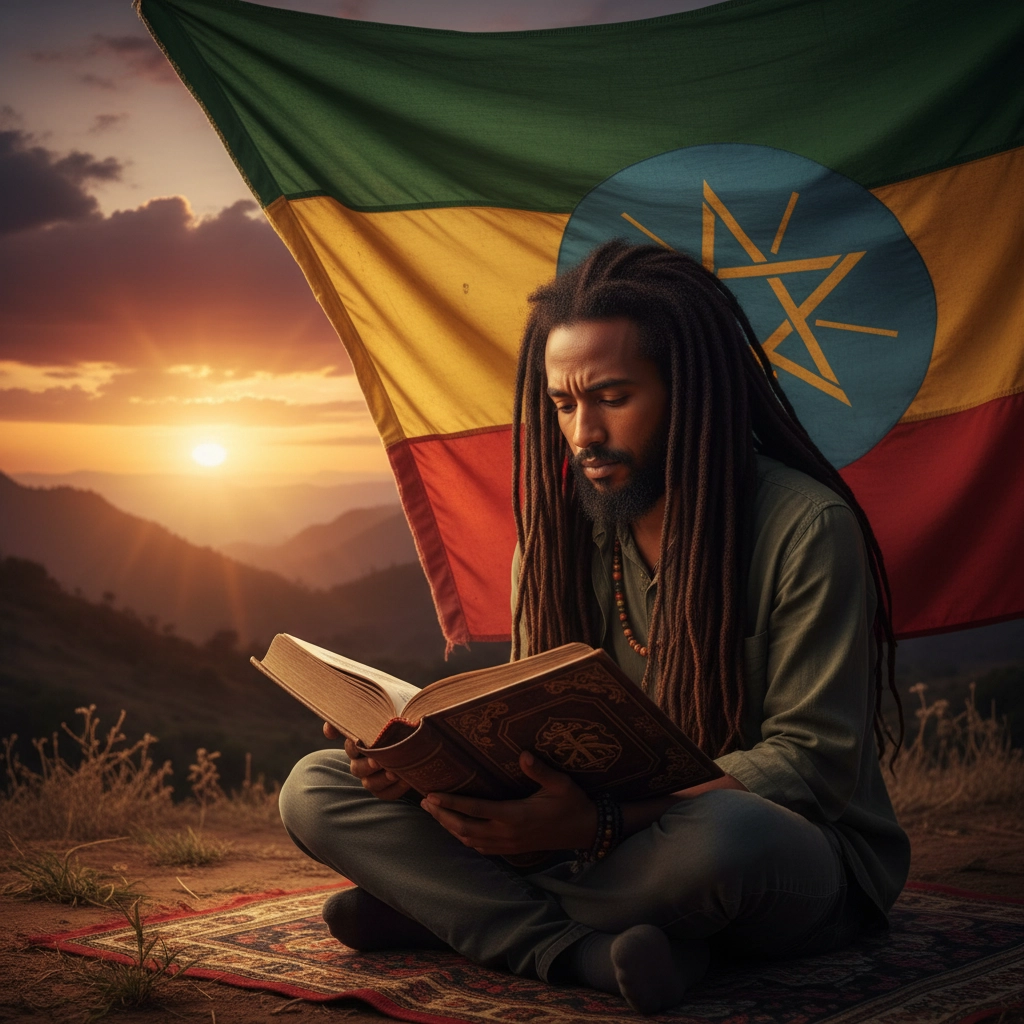
This connection wasn't just intellectual: it was deeply personal. For people whose ancestors had been forcibly removed from Africa, told they were inferior, and stripped of their cultural identities, the Kebra Nagast offered something powerful: a story that put their heritage at the very center of God's plan.
Rewriting African Consciousness
What makes the Kebra Nagast truly remarkable is how it shaped not just Ethiopian identity, but broader African consciousness. It provided a counter-narrative to every racist ideology that positioned Africa as backward or cursed.
The text says clearly: Africans aren't just equal to other peoples: they're chosen. They aren't just participants in sacred history: they're the custodians of that history. The most sacred objects, the most blessed lineage, the ultimate divine favor: all of it rests in Africa.
This wasn't just feel-good mythology. It was ideological warfare against white supremacy, fought with the most powerful weapon of all: a competing story that put Black people at the center of divine purpose.
Modern Legacy and Continuing Power
Today, the Kebra Nagast remains one of the most influential texts in African cultural consciousness. Ethiopian Christians still revere it, many considering it not just literature but revealed truth. Rastafarian communities worldwide continue to study it as sacred scripture. Pan-African movements reference it as proof of Africa's central role in human civilization.
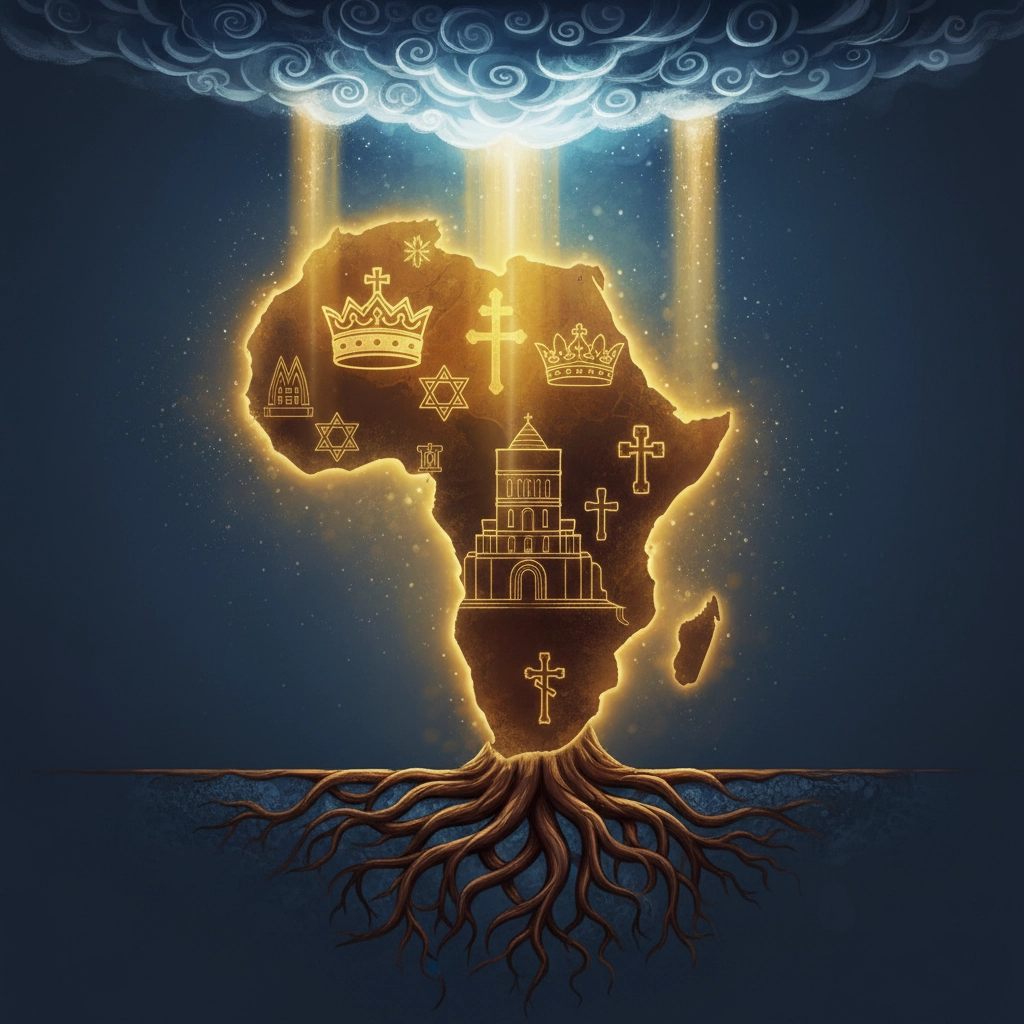
But perhaps most importantly, the Kebra Nagast demonstrates the power of narrative to shape identity. It shows how a people can take control of their own story, define their own worth, and establish their own connection to the divine: regardless of what others say about them.
In an era where cultural identity matters more than ever, where people are reclaiming their heritage and rejecting imposed narratives, the Kebra Nagast stands as a masterclass in self-definition. It reminds us that the stories we tell about ourselves become the reality we live in.
The Takeaway: Own Your Story
The Kebra Nagast teaches us something crucial about cultural heritage: the most powerful stories aren't necessarily the most historically accurate: they're the ones that give people dignity, purpose, and connection to something greater than themselves.
For over 700 years, this text has been telling African people that they matter, that they're chosen, that they carry divine purpose in their bloodline. Whether you take it literally or see it as powerful metaphor, the message remains the same: your heritage is sacred, your lineage is royal, and your story is worth telling.
In a world that still tries to diminish African achievement and African worth, the Kebra Nagast stands as eternal testimony to a simple truth: Africa has always been at the center of the story. It's about time the world recognized it.
